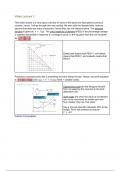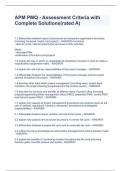Samenvatting
Summary Notes for Micro 4, Industrial Economics Tilburg University
- Instelling
- Tilburg University (UVT)
This document is the long summary for the course " Micro: 4, Industrial Economics" at Tilburg University. The summary consists of weekly notes and a weekly summary of those notes. With this document you have enough information to study and easily pass the exam of this course.
[Meer zien]













